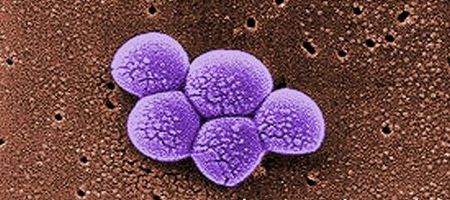A new genetic analysis tool can distinguish between strains of the deadly superbug MRSA, and even identify when and where in the world each strain arose.
A team has developed a method of tracking each strain, from large-scale inter-continental transmission down to person-to-person infection in a single hospital.

The new tool should help researchers understand how MRSA strains can spread so quickly, and help control outbreaks of other superbugs as well.
The team used new, very high-throughput DNA sequencing technologies to compare MRSA samples from patients around the world and show their genetic relatedness. Very quickly, they were able to spot single-letter changes in the genetic code and identify differences between even the most closely related strains.
They sequenced the whole genomes of all the samples using a next-generation DNA sequencing technology, showing that no two infections were caused by identical bacteria.
Based on these differences, the researchers divided their Thai hospital samples into two groups. In one group, they found five which were extremely similar.
“This group of five related MRSA strains caused infections in patients who were resident in intensive care units in adjacent blocks of the hospital,” explained Dr Ed Feil, from the Department of Biology and Biochemistry at the University of Bath. “All were isolated within a few weeks of each other. By contrast, bacteria from patients housed in other parts of the hospital were much less similar.”
“This cemented our theory – based on the sequence comparison – that there were two different groups of isolates that had had been introduced to the hospital separately.”
Importantly, the team was also able to determine the rate at which DNA sequence typically mutated.
The results indicated that the dominant strain of MRSA worldwide emerged in Europe in the 1960s – around the time of the introduction of widespread antibiotic use.
“The implications for public health are clear,” said Dr Sharon Peacock, from the Department of Medicine at the University of Cambridge University and the Faculty of Tropical Medicine at Mahidol University in Bangkok.
“This technology represents the potential to trace transmission pathways of MRSA more definitively so that interventions or treatments can be targeted with precision and according to need.”







